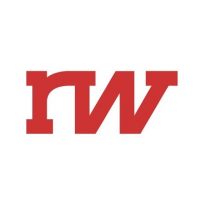Vistar launches private marketplace for Digital Out-of-Home
Company says it has the largest supply of inventory — covering thousands of billboards and screens in taxis, elevators and bus shelters.

The Digital Out-of-Home (DOOH) market is heating up. And, to keep up, DOOH ad platform Vistar Media has launched a private marketplace.
Called Marketplace Deals, it covers outdoor US and Canadian digital signage like billboards, bus shelter displays and screens in elevators and taxis.
In a private marketplace, ad buyers and inventory sellers know from whom they are buying or selling, as opposed to open digital ad exchanges where the identities of advertisers and inventory owners are less visible.
CEO Michael Provenano told me that Marketplace Deals is distinguished from other DOOH private marketplaces by two differentiators.
First, he said, it offers much more inventory than any other marketplace, representing over 30 different owners — including Captivate, Clear Channel Outdoor and Lamar — and constituting about 90 percent of DOOH ad space in the US.
The other factor, he said, is that Marketplace Deals allows advertisers to buy space either via its own self-service demand side platform (DSP), other DSPs or agencies’ managed service trading desks. In other words, he said, inventory owners have a better view of the diverse sources of demand.
Provenzano said that ad bidding and serving in this DOOH marketplace resembles the real-time, programmatic bidding offered in private marketplaces for online ads. More specifically, he added, it’s like video online ads, both because the assets are often video and because premium screen space is in high demand.
After the sale is completed, the ad — either static digital imagery or video — is delivered to the billboard or sign through an ad server from Vistar, from one of the inventory owners or from a third party.
Advertisers can buy targeted segments of viewers, to some degree. Provenzano said that his firm uses on-site surveys and location data to determine user segments, such as a location that is likely to have frequent McDonald’s customers.
One key difference from online ads, he pointed out, is that the ads themselves need to be uploaded a few days in advance so they can be approved by the inventory owner, because they are shown in public spaces. This can take anywhere from a few minutes to a day to get approved.
A year ago, the New York City-based Vistar utilized what it said was the initial use of first-party data for OOH campaigns, through a partnership with data onboarding provider LiveRamp.
Marketing Land – Internet Marketing News, Strategies & Tips
(50)














